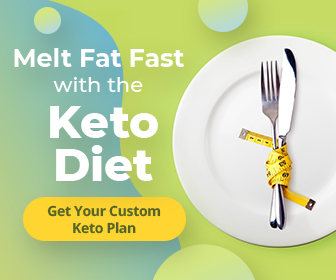How do you reduce visceral fat?
The research on visceral fat may sound daunting—even a little scary—but it’s not all discouraging. In studying the issue, experts have also uncovered some simple measures people can take to reduce visceral fat and improve health, says Tammy Lakatos Shames, a registered dietician nutritionist and co-owner of The Nutrition Twins. It’s also worth noting that these strategies can support healthy weight management, too! Here’s a closer look at some measures you might consider trying.
1. Move in a way that works for you
Whether you like your cardio workouts quick and super sweaty, or longer and a little less intense, pretty much any regular activity that gets your heart pumping can help keep visceral fat in check, a small 2015 study concluded. This builds on a major 2012 research review linking aerobic activity in general to lower amounts of visceral fat.
Resistance training can be helpful, too, Lakatos Shames adds. “Strength training builds lean muscle tissue, which will increase your metabolic rate so you burn more calories,” she explains.
Of course, getting rid of belly fat might not be your only workout goal. If you’re just starting out, take a few moments to figure out how much and what kind of exercise makes sense in the context of your life.
2. Fill up on protein
Enjoying lean sources of protein such as fish, poultry, and beans may have a beneficial effect on visceral fat. An analysis of nearly 24,000 adults published in The Journal of Nutrition found that those whose diets were high in protein had significantly less visceral fat (and lower body mass indexes) than those who simply hit the recommended daily allowance (RDA) for the nutrient. One possible reason is that protein reduces a hunger hormone called ghrelin and increases satiety hormones, Lakatos Shames says, a dual effect that may reduce overall calorie intake. Protein is also key for building that lean muscle mass we just mentioned.
The RDA for protein—in other words, the amount needed for basic human functioning—is 0.8 g per kg of bodyweight. In the study above, high-protein diets were defined as 1.0 to 1.5 g of protein per kilogram. For a 165-pound person, that would shake out to 45 to 67 g of protein a day—about what you’d get in two large eggs (12 g); ½ cup of cooked lentils (9 g); and one skinless chicken breast (26 g). Just note that it’s advisable to consult a registered dietician or doctor before making any big changes to the nutrient balance of your diet, especially if you are living with a health condition.
3. Go easy on soda and alcohol
In some cases, belly fat may be a reflection of beverage intake. In one long-term study of more than 1,000 adults, published in Circulation, those who sipped sugar-sweetened soft drinks every day had significantly more visceral fat after six years than adults who rarely or never drank sugary soda. To get the sweet and bubbly combo sans sugar, try sparkling water infused with fresh fruit.
....
✅ Recommended products: https://bit.ly/cb_abc
Follow me on social media:
➡️ Blog: https://thealthfitnesss.blogspot.com/
➡️ Youtube: http://tiny.cc/viqytz
➡️ Facebook: http://tiny.cc/7jqytz
➡️ Twitter: http://tiny.cc/2jqytz
➡️ Pinterest: http://tiny.cc/8jqytz
➡️ Instagram: http://tiny.cc/hiqytz
Tag:
#losebellyfatfast #losebellyfatin1week #losebellyfatin10minutes
#losebellyfat
#losebellyfatexercise
#losebellyfatworkout
#losebellyfatdiet
#losebellyfatfast
#losebellyfatfood
#losebellyfattips
#losebellyfatforwomen
#bellyfatlose









0 nhận xét:
Post a Comment